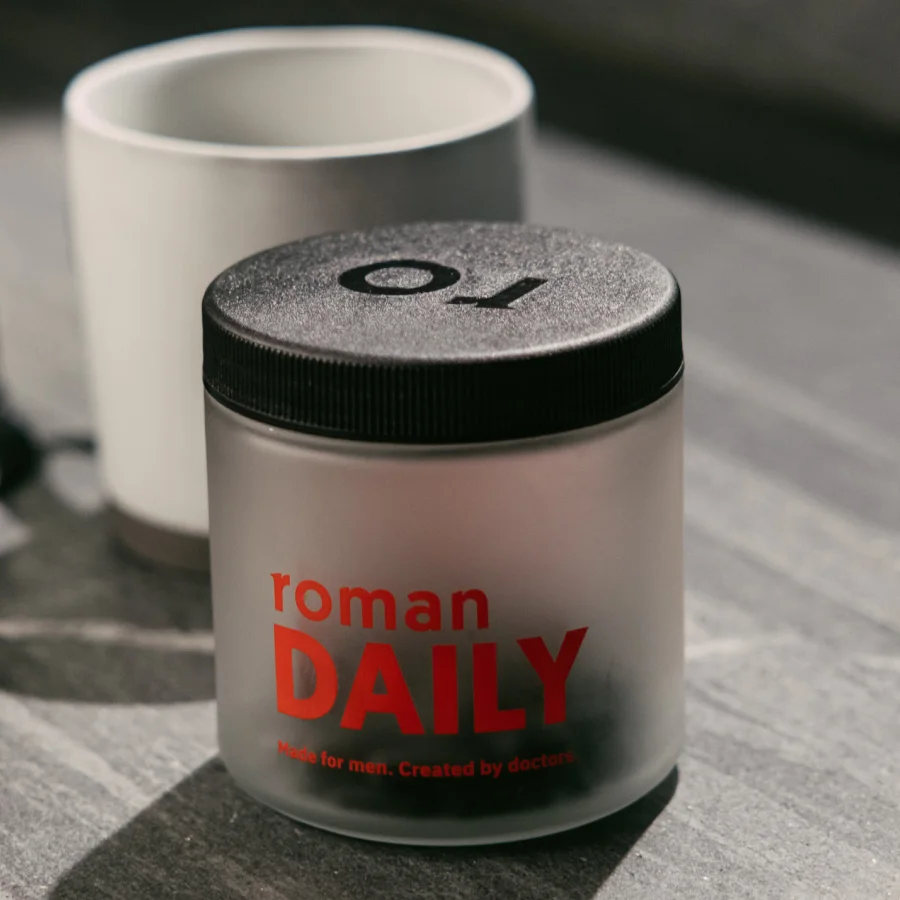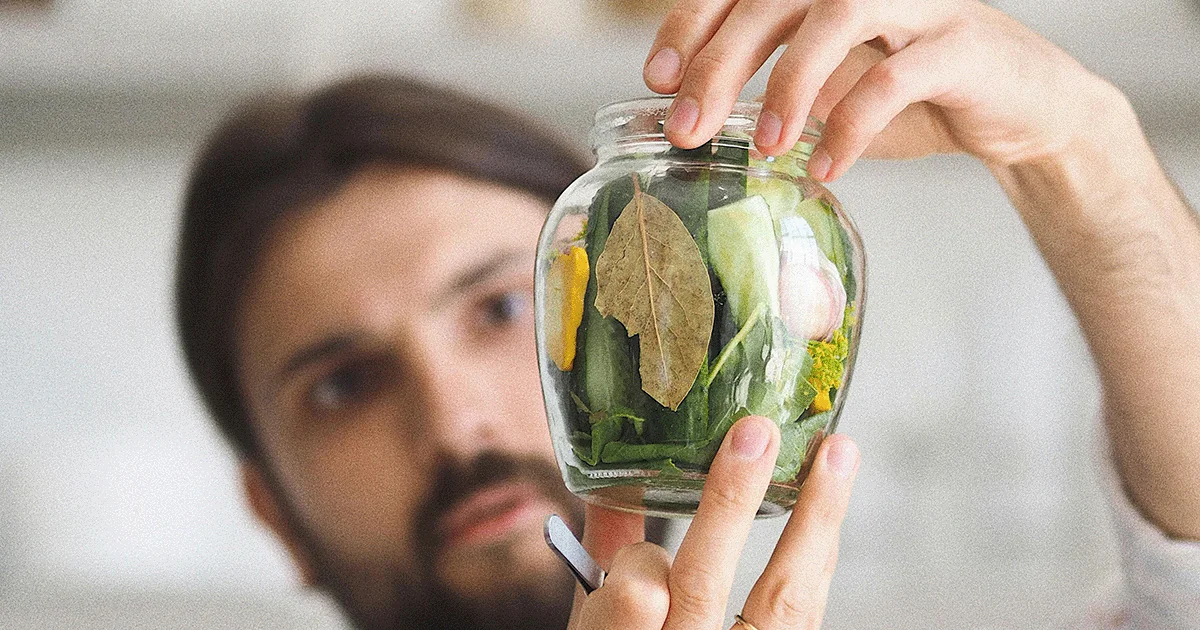Here's what we'll cover
Here's what we'll cover
In simple terms, vitamin E is an antioxidant; meaning, it helps to fight free radicals (unstable molecules that can cause damage in your body) (Mohd Mutalip. 2018). But, it may surprise you to learn that vitamin E isn’t just one nutrient. It’s actually a catchall name for eight closely related molecules, all of which offer some important health benefits.
Because your body needs some forms of vitamin E to work properly, it’s essential that you take in a certain amount of it daily. While you can get vitamin E from either foods or supplements, not all sources of vitamin E are created equal; so it’s important to understand why the different types of vitamin E matter and how they benefit the body.
What is vitamin E?
Known for its antioxidative properties, vitamin E is a fat-soluble vitamin—meaning, your body stores it in your tissues—that is actually made up of eight different vitamin-E molecules. All eight of these molecules come primarily from plants, which make vitamin E during photosynthesis—when they convert sunlight into energy (Reboul, 2017).
Your body breaks down these eight vitamin E molecules into two groups based on their chemical structures—tocopherols and tocotrienols—and each of these molecules seems to do slightly different things inside your body (Reboul, 2017).
Foods that naturally contain vitamin E usually contain all eight of these tocopherols and tocotrienols. But the exact amounts of each can differ from one food to the next, which is why you need to eat a varied diet—but more on that later (Ahsan, 2015).
What are the benefits of vitamin E?
Studies link the different vitamin E molecules to several critical health functions and benefits. One caveat is that much of the research was done in a lab environment and on cell cultures, so the results do not necessarily mean those molecules have the same effects on a living being.
Here’s a rundown of some of their studied effects.
Antioxidant action
All eight vitamin E molecules are antioxidants. That means that they can prevent or counteract cell damage and dysfunction caused by free radicals and oxidative stress. For example, vitamin E may help counteract the kinds of cell damage that can result from alcohol or tobacco use, stress, or a poor diet (Mohd Mutalip, 2018).
Cell health
Both tocopherols and tocotrienols seem to help cells work properly. Some of these molecules assist with cell growth or strengthen cell membranes. Others support different elements of gene expression within your cells, meaning they influence how the cells work and their ability to helpfully perform important jobs inside your body (Azzi, 2019).
Disease prevention
Certain tocopherols may slow or prevent the spread of some cancer cells in cell culture experiments. Research links tocotrienols to some of these same effects—albeit through different cellular pathways and processes. Lab studies have also found that tocotrienols may help counteract some cellular or blood abnormalities that contribute to coronary heart disease or neurodegenerative diseases (Azzi, 2019).
Immune health
The various vitamin E molecules seem to strengthen healthy immune-system operation. They can also have an anti-inflammatory effect. Through these roles, vitamin E may help lower your risk for infectious diseases, as well as allergic diseases such as asthma (Lewis, 2019).
The beneficial effects of vitamin E may also include improvements in blood pressure, blood clotting—studies show that vitamin E may have an anticoagulant effect—and a reduced risk for cardiovascular disease. (Emami, 2019).
Vitamin E may also play a therapeutic role. Some research has found that vitamin E may help people with non-alcoholic fatty liver disease or other medical conditions (Vadarlis, 2020).
Risks of vitamin E deficiency
While all the different vitamin E molecules seem to offer some benefits, research shows that only one of these molecules—alpha-tocopherol—is an “essential” vitamin. That means you have to have it for normal and healthy functioning (Azzi, 2019).
People who don’t have enough alpha-tocopherol may develop a disease that causes weakness, poor coordination, slurred speech, and other muscle-related impairments. This disease is called ataxia with isolated vitamin E deficiency, or AVED (Khadangi, 2019).
A large percentage of people—perhaps 90% or more of adult women in the U.S.—are not getting sufficient vitamin E intake from their diet (Traber, 2014). But, surprisingly, the incidence of vitamin E deficiency in the U.S. is very low. Unless you have a medical condition that interferes with your body’s absorption of vitamin E—such as cystic fibrosis or Crohn’s disease—you don’t seem to be at much risk for a deficiency (Ahuja, 2004, Kemnic, 2021).
Sources of vitamin E
If you don’t take supplements, your body primarily gets vitamin E from food.
Food
A lot of foods are sources of vitamin E. But the vitamin E in some foods has low bioavailability. That means your body can’t absorb it very well. This is partly because vitamin E is a fat-soluble vitamin. If you don’t swallow fat molecules along with vitamin E, your body will struggle to take up the vitamin E (Reboul, 2017).
When taking bioavailability into account, vegetable oils, nuts, and seeds are the best dietary sources of the vitamin. These foods contain fats (lipids), which help your body absorb it (Reboul, 2017).
If you’re looking to improve your intake of vitamin E, here are some foods that naturally contain the vitamin (Schmölz, 2016; Reboul, 2017; NIH-a, 2020):
Vegetable oils, especially sunflower oil and safflower oil
Seeds, particularly sunflower seeds
Nuts, such as almonds, walnuts, and hazelnuts
Soybeans and soybean oil
Coconut oil
Barley and wheat germ oil
Leafy green vegetables, such as spinach and broccoli
Peanut butter
Butter
Fatty fish
Fruits, including bananas and tomatoes
Because different foods contain differing amounts or concentrations of the eight types of vitamin E, the National Institutes of Health recommends that you eat various vitamin-E-rich foods (NIH-a, 2020).
Supplements
While the different forms of vitamin E seem to do good work in the human body, the use of vitamin E supplements or multivitamins has mixed health effects.
For example, more than a dozen clinical trials have looked at vitamin-E supplements for the improvement of high blood pressure. Systematic reviews of these trials have turned up inconsistent results (Emami, 2019).
The same is true of randomized controlled trials that have looked at vitamin E supplements to treat or prevent neurological diseases, such as Alzheimer’s disease. A meta-analysis of these studies has turned up mixed findings. Some work has found that food sources of vitamin E may provide improvements that don’t show up when people take vitamin E as a pill (Browne, 2019).
Meanwhile, large-scale studies on people who take vitamin E supplements have mostly failed to show significant disease or longevity benefits (Niki, 2015). While supplements may be useful for people who have a diagnosed deficiency, it’s unclear whether other people benefit from taking them (Kemwel, 2021).
Risks and side effects of vitamin E supplements
Several studies have found that taking vitamin E as a dietary supplement, especially high doses of vitamin E, may come with risks. For example, some work links vitamin E pills to higher overall all-cause mortality. But other studies have not turned up this risk (Miller, 2005)).
The same shaky findings turn up in research on vitamin E supplements and cancer. One study’s results show that healthy men who took a daily vitamin-E supplement containing 400 IU of alpha-tocopherol and selenium (another nutrient) experienced an increased risk of prostate cancer compared to men who took a placebo (Klein, 2011; Jiang, 2017).
Meanwhile, work has found that alpha-tocopherol supplements may be helpful for the prevention of bladder cancer, while other forms of vitamin E have the opposite effect (Chen, 2015).
Long story short, the research findings are all over the map when it comes to vitamin E supplements. That said, there is no evidence that the vitamin E found naturally in whole foods is risky (NIH-b, 2021).
How much vitamin E do you need?
In the U.S., the recommended dietary allowance (RDA) for the essential form of vitamin E varies depending on your age and whether you’re breastfeeding.
According to the National Institutes of Health, the RDAs for vitamin E are (NIH-b, 2021):
Adults and teens ages 14 and older: 15 mg
Breastfeeding women: 19 mg
Infants and younger children: 4 mg to 11 mg
When it comes to the other forms of vitamin E, there is no recommended daily amount.
To sum up, vitamin E—in all its forms—seems to do all sorts of helpful things inside your body. Many foods contain vitamin E, but most people aren’t eating enough of them to meet their RDA targets.
But unless a healthcare provider diagnoses you with a vitamin-E deficiency, it’s not clear that taking vitamin-E supplements is a helpful and healthy way to make up for this shortfall. If you’re thinking about taking vitamin E, it may be worth seeking medical advice first (NIH-b, 2021).
DISCLAIMER
If you have any medical questions or concerns, please talk to your healthcare provider. The articles on Health Guide are underpinned by peer-reviewed research and information drawn from medical societies and governmental agencies. However, they are not a substitute for professional medical advice, diagnosis, or treatment.
Ahsan, H., Ahad, A., & Siddiqui, W. A. (2015). A review of characterization of tocotrienols from plant oils and foods. Journal of chemical biology , 8 (2), 45–59. doi: 10.1007/s12154-014-0127-8. Retrieved from https://www.ncbi.nlm.nih.gov/pmc/articles/PMC4392014/
Ahuja, J. K., Goldman, J. D., & Moshfegh, A. J. (2004). Current status of vitamin E nutriture. Annals of the New York Academy of Sciences , 1031 , 387–390. doi: 10.1196/annals.1331.052. Retrieved from https://nyaspubs.onlinelibrary.wiley.com/doi/abs/10.1196/annals.1331.052
Azzi, A. (2019). Tocopherols, tocotrienols and tocomonoenols: Many similar molecules but only one vitamin E. Redox biology , 26 , 101259. doi: 10.1016/j.redox.2019.101259. Retrieved from https://www.sciencedirect.com/science/article/pii/S2213231719305336#bib7
wne, D., McGuinness, B., Woodside, J. V., & McKay, G. J. (2019). Vitamin E and Alzheimer's disease: what do we know so far?. Clinical Interventions in Aging , 14 , 1303–1317. doi: 10.2147/CIA.S186760. Retrieved from https://www.ncbi.nlm.nih.gov/pmc/articles/PMC6645610/
Chen, F., Li, Q., Yu, Y., Yang, W., Shi, F., & Qu, Y. (2015). Association of vitamin C, vitamin D, vitamin E and risk of bladder cancer: a dose-response meta-analysis. Scientific Reports , 5 , 9599. doi: 10.1038/srep09599. Retrieved from https://www.nature.com/articles/srep09599
Emami, M. R., Safabakhsh, M., Alizadeh, S., Asbaghi, O., & Khosroshahi, M. Z. (2019). Effect of vitamin E supplementation on blood pressure: a systematic review and meta-analysis. Journal of Human Hypertension , 33 (7), 499–507. doi: 10.1038/s41371-019-0192-0. Retrieved from https://www.nature.com/articles/s41371-019-0192-0
Jiang, Q. (2017). Natural Forms of Vitamin E as Effective Agents for Cancer Prevention and Therapy. Advances in Nutrition (Bethesda, Md.) , 8 (6), 850–867. doi: 10.3945/an.117.016329. Retrieved from https://www.ncbi.nlm.nih.gov/pmc/articles/PMC5683003/
Klein, E. A., Thompson, I. M., Jr, Tangen, C. M., Crowley, J. J., Lucia, M. S., Goodman, P. J., et al. (2011). Vitamin E and the risk of prostate cancer: the Selenium and Vitamin E Cancer Prevention Trial (SELECT). JAMA , 306 (14), 1549–1556. doi: 10.1001/jama.2011.1437. Retrieved from https://pubmed.ncbi.nlm.nih.gov/21990298/
Kemnic, T. R., & Coleman, M. (2021). Vitamin E Deficiency. [Updated Jul 18, 2021]. In: StatPearls [Internet]. Retrieved on Nov. 5, 2021 from https://www.ncbi.nlm.nih.gov/books/NBK519051/
Khadangi, F., & Azzi, A. (2019). Vitamin E - The Next 100 Years. IUBMB life , 71 (4), 411–415. doi: 10.1002/iub.1990. Retrieved from https://pubmed.ncbi.nlm.nih.gov/30550633/
Lewis, E. D., Meydani, S. N., & Wu, D. (2019). Regulatory role of vitamin E in the immune system and inflammation. IUBMB life , 71 (4), 487–494. doi: 10.1002/iub.1976/. Retrieved from https://iubmb.onlinelibrary.wiley.com/doi/pdf/10.1002/iub.1976
Mohd Mutalip, S. S., Ab-Rahim, S., & Rajikin, M. H. (2018). Vitamin E as an Antioxidant in Female Reproductive Health. Antioxidants (Basel, Switzerland) , 7 (2), 22. doi: 10.3390/antiox7020022. Retrieved from https://www.ncbi.nlm.nih.gov/pmc/articles/PMC5836012/
Miller, E. R., 3rd, Pastor-Barriuso, R., Dalal, D., Riemersma, R. A., Appel, L. J., & Guallar, E. (2005). Meta-analysis: high-dosage vitamin E supplementation may increase all-cause mortality. Annals of internal medicine , 142 (1), 37–46. doi: 10.7326/0003-4819-142-1-200501040-00110. Retrieved from https://pubmed.ncbi.nlm.nih.gov/21990298/
Niki, E. (2015). Evidence for beneficial effects of vitamin E. The Korean Journal of Internal Medicine , 30 (5), 571–579. doi: 10.3904/kjim.2015.30.5.571. Retrieved from https://www.ncbi.nlm.nih.gov/pmc/articles/PMC4578028/
Reboul, E. (2017). Vitamin E Bioavailability: Mechanisms of Intestinal Absorption in the Spotlight. Antioxidants (Basel, Switzerland) , 6 (4), 95. doi: 10.3390/antiox6040095. Retrieved from https://pdfs.semanticscholar.org/f9d7/9c4b4aa57a182adf44751d1c57aec9de047a.pdf
Schmölz, L., Birringer, M., Lorkowski, S., & Wallert, M. (2016). Complexity of vitamin E metabolism. World Journal of Biological Chemistry , 7 (1), 14–43. doi: 10.4331/wjbc.v7.i1.14. Retrieved from https://www.ncbi.nlm.nih.gov/pmc/articles/PMC4768118/
Traber, M. G. (2014). Vitamin E inadequacy in humans: causes and consequences. Advances in nutrition (Bethesda, Md.) , 5 (5), 503–514. doi: 10.3945/an.114.006254. Retrieved from https://www.ncbi.nlm.nih.gov/pmc/articles/PMC4188222/
Vadarlis, A., Antza, C., Bakaloudi, D. R., Doundoulakis, I., Kalopitas, G., Samara, M., Dardavessis, T., Maris, T., & Chourdakis, M. (2021). Systematic review with meta-analysis: The effect of vitamin E supplementation in adult patients with non-alcoholic fatty liver disease. Journal of Gastroenterology and Hepatology , 36 (2), 311–319. doi: 10.1111/jgh.15221. Retrieved from https://onlinelibrary.wiley.com/doi/abs/10.1111/jgh.15221
United States National Institutes of Health (NIH)-a. (2020). Vitamin E Fact Sheet for Consumers . Retrieved October 29, 2021 from https://ods.od.nih.gov/pdf/factsheets/vitamine-Consumer.pdf
United States National Institutes of Health (NIH)-b. (2021). Vitamin E . Retrieved October 29, 2021 from https://ods.od.nih.gov/factsheets/vitamine-consumer/










